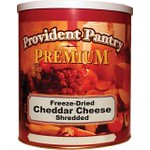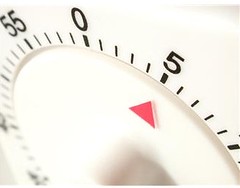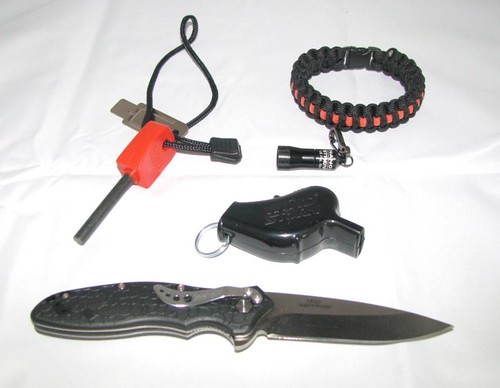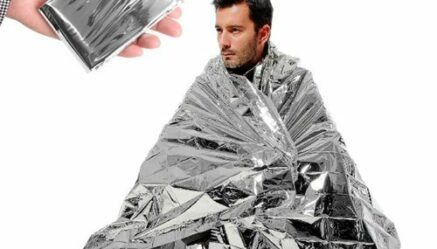This site contains affiliate links. As an Amazon Associate, I earn a commission from qualifying purchases at no extra cost to you. Full Disclosure Here.

Come on. I said just five minutes. And five minutes a day over the course of a year? That 30 hours with a whole lot of prepping going on. Today I am sharing some preparedness projects that can be accomplished in just five minutes. So if you think you don’t have time to prep, think again.
Shall we start? Here are some 5 minute projects, listed in no particular order.
5 MINUTE PREPPING PROJECTS FOR PEOPLE WITH NO TIME
1. Purchase a prepping notebook or binder where you can accumulate information you need in the event of an emergency.
2. Wash out empty juice jugs, swish with a bit of bleach and fill them with water for an emergency. Be sure to date them so that you that you can rotate them on an annual basis.
3. Place a pair of shoes, socks, work gloves, a whistle, and a light stick or flashlight with batteries under your bed for use during or after an emergency.
4. Talk to family members about how you will re-unite with each other following a disaster.
5. Choose an out-of-state contact person that is willing to be a relay point for information after-the-fact to your other family members and loved ones. (Following a disaster, telephone lines to an out-of-state location may work when local calls do not.)
6. Introduce yourself to a neighbor you have not met. Exchange emergency telephone numbers.
7. Purchase a manual can opener on your next visit to the store.
8. Fill empty milk jugs or other plastic containers with water and store them in your freezer. The frozen jugs will keep your food colder for longer in the event of a power outage. The water can also serve as a backup source for cleaning or sanitation purposes.
9. Read Food Safety When the Grid Goes Down and print out the food safety charts at the at the FoodSafety.gov website. Attach them to the inside of a cupboard door so you have them handy after a power outage or disaster.
10. Mark your calendar with a date one year from now so that you remember to rotate your canned goods out of storage.
11. Purchase extra canned goods each time you visit the grocery store.
12. Locate your utility shutoff valves and review the instructions for turning them off. Place a shut-off tool by the door nearest to them
13. Test your smoke alarms.
14. Make a list of all of your prescription drugs along with dosages and keep the list in your emergency kit.
15. Take digital photos of each room in your house. Take five minutes for each room and do you best to capture as much as you can. This will facilitate any after the fact insurance claims.
16. Write down your insurance policy numbers and your agent’s phone number, and put them in your wallet and in your emergency kit.
17. Add $1 a week to your emergency cash fund. If you can afford it, add $5 per week (or more) to the fund.
18. Make digital copies of your important documents and store them on a flash drive.
19. Make a backup copy of the data on your computer hard drive and give it to a friend or relative to store for you. In computer terms, this is called “off site backup”.
20. Locate a source of water outside of your home such as a lake, pond or stream.
21. Learn to cook a pot of rice.
22. Download free prepping, survival and homesteading for e-books from Amazon as they become available. Check the Backdoor Survival Facebook page for almost daily announcements of books that are currently available – often for just a day or two.
23. Call (800-480-2520) or email FEMA ([email protected]) to order a free copy of their excellent print book “Are You Ready Guide to Preparedness”. For more information about this publication, see Free for You: The “Are You Ready Guide to Preparedness”.
24. Practice starting a fire using a bit of dryer lint, a cotton ball soaked in petroleum jelly or a flint and steel.
25. Sow some seeds, fruits and veggies that is.
26. Visit one of the websites in the article Special Report: The Best Prepper Websites.
So there you go, 26 prepping projects that will take only five minutes each. Have some ideas of your own? I would love to have you share them in the comments below.
THE FINAL WORD
Preparing for a disaster or crisis or even an economic collapse does not have to be an insurmountable task. Breaking tasks down in to manageable chunks will make the job less chore-like and less of a burden. As a bonus, when you are done, you will feel the sense of satisfaction that comes from knowing that you have done something to secure your safety and well-being if it all goes to heck.
One thing for sure, you need to make every day a prepping day!
Enjoy your next adventure through common sense and thoughtful preparation!
Gaye
If you have not done so already, please be sure to like Backdoor Survival on Facebook to be updated every time there is an awesome new article, news byte, or free survival, prepping or homesteading book on Amazon. In addition, when you sign up to receive email updates you will receive a free, downloadable copy of my e-book The Emergency Food Buyer’s Guide.
Bargain Bin: Everyone needs a portable pocket survival kit. Here are links to the items in my own Portable Pocket Survival Kit.
Kershaw OSO Sweet Knife: This “oh so sweet” knife is solidly built, stainless steel knife that comes razor sharp right out of the package. It will pretty much cut through anything the price is amazing.
Streamlight Nano Light Keychain LED Flashlight: extremely small and light weight yet it will throw off a decent amount of super-bright light. At just .36 ounces and 1.47 inches long, the Streamlight Nano Light Keychain Flashlight will take up a minimum of space in your pocket or bag.
Paracord Survival Bracelet: Why a Paracord Bracelet? So you always have some of this useful cord on your person.
Windstorm Safety Whistle: This particular whistle can be heard a long distance away and above howling wind and other competing sounds.
Swedish Firesteel: Using this basic pocket fire-starter, you can get a nice fire going under almost any conditions. This is a small, compact version.
Pepper Spray: It is always good to have some form of defense that will temporarily halt a bad guy that is in your face.
Emergency Mylar Thermal Blankets: These come in compressed packets small enough to fit in a pocket or wallet. You will be surprised at how warm these will keep you.

For May, all of their Mountain House Pouches are on sale as is their Freeze Dried Shredded Sharp Cheddar Cheese for $34.99, discounted from $40.95. (And you know how I love my cheese! Great on those homemade pizzas or even as a snack right out of the can – yummy!)
Another special to consider is the Kelly Kettle® Large Stainless Steel Base Camp Combo for $109.99, discounted from $132.92.
Like this and want more?
CLICK HERE to visit Backdoor Survival on Facebook. And CLICK HERE to follow Survival Woman on Twitter.
I earn a small commission from purchases made when you begin your Amazon shopping experience here.
Shop Amazon Tactical – Great Selection of Optics, Knives, Cases, Equipment
Amazon’s Most Wished For Items in Sports and Outdoors
Help support Backdoor Survival. Purchases earn a small commission and for that I thank you!



 1. Purchase a prepping notebook or binder where you can accumulate information you need in the event of an emergency.
1. Purchase a prepping notebook or binder where you can accumulate information you need in the event of an emergency.






18 Responses to “26 Five Minute Prepping Projects”
Instead of this suggestion:
18. Make digital copies of your important documents and store them on a flash drive.
A better solution might be to open a free “cloud” service account, many of which will give you 5-10 gigabytes of storage. An alternative to that would be to open up a new e-mail account, on Yahoo/Gmail/etc, and e-mail the documents to yourself. Unsure of what to make for a new username for an e-mail account? Take your first name + “documents” (i.e.-BillDocuments), and use your last name as the password.
This way, if your hose (and flash drive) are lost in a tornado/earthquake/fire/etc, you can still access those documents from, say, a public library computer.
I have read it on SO many preparedness websites. There is NO reason to rotate stored water. Water will always be – water! If it isn’t fit to drink, use it for grey water, but don’t waste it by pouring it out and refilling a jug. Fill a new jug. Water is a precious commodity – never waste it.
“10. Mark your calendar with a date one year from now so that you remember to rotate your canned goods out of storage.” Since #11 says to buy extra canned goods each time you go to the grocery store, it would be better to mark the date right on the cans, or the box if you bought a case of something. And most canned goods will last more than one year and still be just fine.
Just need to be aware if your jugs are bpa free. Toxicity leaches into the water
//www.ehow.com/list_7482248_plastic-bottles-toxic.html
1. Unless your home is 100% all electric, get a carbon monoxide alarm if you don’t already have one. And even then it’s not a bad idea as in an emergency you may want to use a propane device, and it’ll hopefully keep you from dying from the CO.
2. Calcium chloride ice melt. Get a 50# bag and fill the empty milk jugs with it. Keep one jug in each car.
3. Hurricane matches. Get a bunch. They aren’t cheap, but they’re the best.
4. GMRS/FRS radio. Regular CBs can become clogged with radio traffic. A good brand can also provide encryption so you can have private discussion with family. Depending pn the make and model, it may come with frequencies that require a license. In emergencies I doubt the FCC will chase you down. And in regular times, I doubt they will chase you down if you’re not being obnoxious.
3. Place a pair of shoes, socks, work gloves, a whistle, and a light stick or flashlight with batteries under your bed for use during or after an emergency.
Add to this a mobile phone to call for assistance, spare house and car keys in case you have to get out of the house from an upstairs window and need to get back inside to put out small fires safely with extinguishers you have placed at door exits. I also have a spare set of old clothes, shoes and a blanket packed in a suitcase in the caravan in the garden along with an emergency supply of bottled water and food in pull tab tins. Though a dry shed or outhouse would suffice for this no doubt.
For a five minute at a time project:
You can fix up a go-bag a few moments at time by leaving it open in a place you will see it (I myself am an out-of-sight-out-of-mind person), say a corner of the kitchen, and dropping in the things you want to have at the ready. On laundry day, drop in clean socks and undies. On grocery day, buy a few easy to eat nibbles (that you like) – tuna in a pouch, nuts, dry fruit, plus a bottle of water, drop them in the bag. Make a list of other things you need to think about: first aid kit, flashlight, etc.. As you go to the hardware store, etc., purchase these things, drop them in the bag when you get home. This is your basic backpack which you can modify according to your needs (weather, for instance).
Get a caravan size chemical toilet and some Elsan Blue or Eco Green fluid as well for when there’s no sanitation or mains water to flush the loo. One essential often overlooked.
Better to freeze and store milk in its container. I have been doing it for years with two pint semi-skimmed milk ones, full fat(cream) is not so good as the fat separates when defrosted. Has been handy already in extended power cuts as the freezer keeps cold, as does the fridge if you put a frozen one on the top shelf. Takes about twelve hours to defrost at 60F and the frozen milk lasts indefinitely in my experience, though still rotate.
No point freezing water as you can store it elsewhere and frozen two pint cartons of milk would be a good bartering asset as well come collapse or extended power outage.
the 2-gallon apple cider jugs work for storing water, I just rinse with hot soapy bleach water for a few minutes then fill, leaving 4″ air space, they stay frozen for several hours after taking them out of the freezer, and can be used for drinking
I would suggest not using milk jugs. They do not hold up as well as, say, 2-liter soda pop bottles, and it is difficult if not impossible to clean all traces of the milk out.
Oops. I did just notice that this was for ice to keep the freezer cold, not for water storage. But you might as well use the pop bottles for that, too, so you’ll have no hesitation about drinking the water if push comes to shove!
We do not drink soda (pop) in our own household although my husband drinks juices occasionally. On the other, hand, almost everyone drinks milk. In practice, almost any container filled with water and frozen will work. With care, zip lock bags work great as long as they are frozen in an upright fashion.
If using a water filter like Berkey, container doesn’t matter.
Juice jugs are great though.
We don’t drink soda, so it’s juice or milk here.
//www.ehow.com/list_7482248_plastic-bottles-toxic.html
Prepping and self sufficient living is more of a hobby and a way to spend productive time with the wife 🙂 having done this the majority of my life, it is just who I am, and that is who my wife chose to be with. Even if we don’t *do* something, we talk about plans or what our prepping needs are. This change and evolve. If you don’t change and evolve your plans, you may not be as prepped as you think you are.